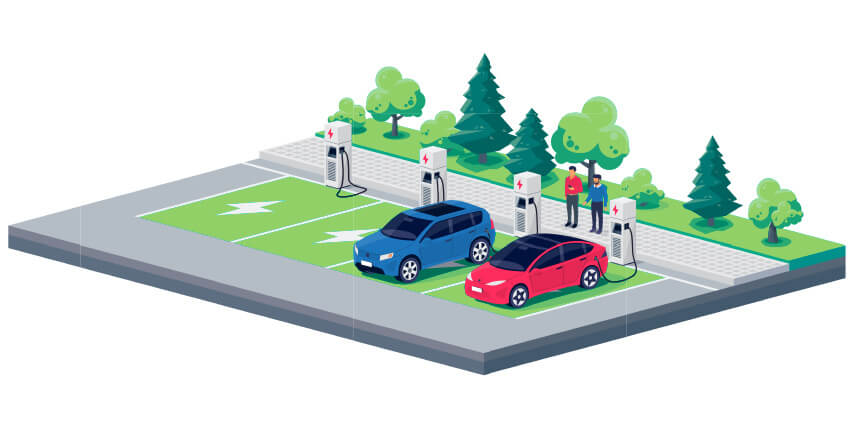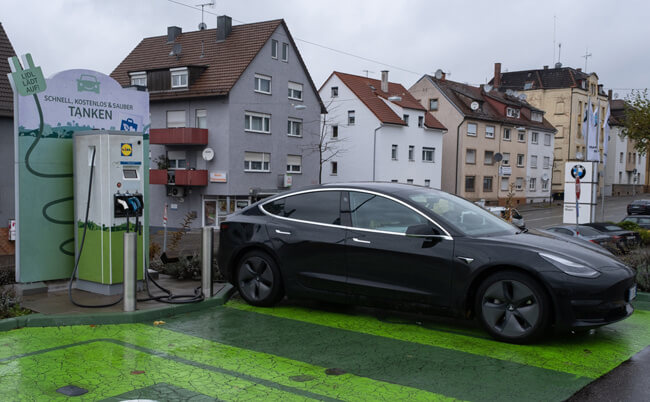The Ultimate Guide to DC Fast Home Chargers: Charging Your Electric Vehicle Made Easy
One of your primary concerns as an EV owner is likely to be locating the most rapid and hassle-free battery charging options.
A DC (direct current) fast charger is your best bet for a rapid charge.
But can a DC fast charger be wired into your house? And if not, what is the best alternative?

Key takeaways
l The DC fast charger, often known as a Level 3 charger, is the quickest and most expensive charging option.
l It is not recommended to install a DC fast charger at home; they are meant for use in commercial and industrial environments only.
l You can find public DC fast chargers for between $0.40 and $0.60 per kW at locations including parking garages, malls, and highway rest stops.
l When it comes to home EV charging stations, an AC fast charger (Level 2 charger) is preferable above a DC fast charger (the quickest charger).
What is DC Fast charger
The DC fast charger, often known as a Level 3 charger, is the quickest and most expensive charging option. The DC quick charger may provide anywhere from 50 kW to 350 kW of power.
DC fast chargers are typically exclusively utilized in commercial or industrial settings, or at the beginning of a highway, due to their high price and extremely high power output.
An electric vehicle may get 3–20 miles of range from a public Level 3 charger every minute. In other words, a full charge for your EV can be attained in about 45 minutes.
Unfortunately, DC fast chargers suffer from a severe dearth of stations around the country.
Is it possible to use a DC fast charger at home?
The quick response is "no."
For use in large-scale commercial and industrial applications, a DC rapid charger is ideal. This is primarily because of the energy needs and costs of a Level 3 charger.
The minimum input voltage for a Level 3 rapid charger is 440 volts DC. Most homes do not have enough power to meet these standards. Most homes cannot safely run a charging equipment that requires this much electricity.
The prohibitive price of DC fast chargers is another barrier to their widespread adoption as household fixtures. A DC fast charger can cost over $50,000 to acquire and maintain. The troublesome nature of setup and upkeep is largely to blame.

Public DC fast charging stations
A public fast-charging station is a place where drivers of electric vehicles may pull up, plug in their vehicles to a compatible charging unit, and recharge their batteries. You can plug your automobile into one of these charging stations. CHAdeMO and CCS (Combined Charging System) are the most used electrical connectors. Tesla also offers their own unique plug for use with its Superchargers.
Over 5,000 public DC fast-charging stations may be found across the United States. Places like parking lots, retail malls, and highways commonly include public charging stations. Popular DC fast-charging station suppliers include Tesla Supercharger, Chargepoint, Electrify America, and EVgo.
You may anticipate to pay between $0.40 and $0.60 per kW when using a DC fast charger. However, this may change depending on the charger's make and model, as well as its physical location.
When speed is of the essence or you need to drive big distances in a short amount of time, using a public DC rapid charging station is an excellent alternative.
Types of DC fast charger connectors
Three primary DC fast charger connector types are now in widespread usage. Tesla's Supercharger, GM's Combined Charging System (CCS), and China's CHAdeMO are the three available plugs.
All three of these DC fast charger ports are exclusive to certain electric vehicles. There is currently no standard connector for DC rapid chargers.
-Tesla supercharger connector
Only Tesla electric vehicles are able to use the Tesla Supercharger because of the unique connector used. To use the Tesla Superchargers, vehicles not made by Tesla will need an adaptor.
There are already over a thousand Supercharger stations in Tesla's nationwide network. In less than 15 minutes, the Supercharger can add 200 miles to your car's range. Supercharger usage fees are added to your Tesla account without any additional action on your part.
-CHAdeMO
Japanese automakers Toyota, Nissan, and Mitsubishi were behind the development and production of the CHAdeMO electrical connector. The CHAdeMO was developed to establish a universal charging protocol for EVs.
The CHAdeMO connector is compatible with more than just the Nissan Leaf, Mitsubishi Outlander PHEV, and Toyota Prius Plug-in, unlike the Tesla Supercharger. In addition, adapters exist on the market that let Tesla vehicles use CHAdeMO chargers.
-Combined Charging System(CSS)
Another common DC rapid charging connector is the Combined Charging System. The CCS can be utilized with vehicles from all around the world, unlike the Tesla Supercharger and CHAdeMO.
Several third-party quick chargers use CCS connections. These rapid chargers from a third party are widely utilized across the country and are compatible with a wide range of electric vehicles.
Best option to have a DC fast charger at home
There are two alternative ways to charge an electric vehicle besides DC fast chargers. Both slow (Level 1) and rapid (Level 2) AC charging are possible. If you can't get your hands on a DC fast charger, go with AC fast charging.
You can charge your electric vehicle quickly and affordably with an AC fast charger. It can produce 3 kW to 19 kW of AC power at up to 240 volts. It could take up to 8 hours for an AC fast charger to fully charge your EV at this power level.
An AC fast charger is much more practical than a DC fast charger because it can be placed in practically any home without breaking the bank. A high-quality AC fast charger for residential use will cost you between $800 and $2000, including installation.

DC fast charger compare VS other charging stations
-Charging speeds
The rate at which your electric vehicle's battery can be charged at a DC fast charger is the primary distinction between it and other types of stations.
Your electric vehicle's battery can be recharged using a Level 3 charger at a rate of 3 to 20 miles per minute. Comparatively, the charging speed of a Level 2 station is between 14 and 35 miles per hour.
-Compatibility
There are three primary connections for DC fast chargers, as was previously mentioned. These chargers are proprietary, therefore your EV can only use one type of charging port.
The SAE J1772 EV plug, on the other hand, is universally accepted at Level 2 charging stations. All-electric vehicles sold in the United States can use this connector. All Tesla models now include an adapter so that they may use this port.
-Locations
The fact that DC fast chargers can only be deployed in specific locations is one of their major drawbacks. DC fast chargers are extremely rare and are typically only located in commercial areas or next to major thoroughfares. Level 2 charging stations, on the other hand, are not restricted to just public spaces but can be erected anywhere.
There are also significantly less DC fast-charging facilities than Level 2 stations across the country. While there are more than 43,000 Level 2 charging stations and over 120,000 Level 2 charging ports, the United States only has around 5,000 DC fast-charging stations.
Benefits of DC fast charger
Sustainable
Range anxiety is a major deterrent to the widespread use of electric vehicles. Your company will play a vital role in the spread of DC fast chargers, hence accelerating the transition to electric mobility.
Safe
A safe DC charger will charge your electric vehicle to 80% capacity at full speed, and then automatically slow down to prevent damaging the battery.
Accessible
As more DC fast chargers become available to the public, EV drivers will be able to incorporate charging into their existing routines (such as charging while performing errands like grocery shopping or lunch).
Easy
Easy EV You may just touch your payment card, plug in your vehicle, and wait for it to charge at a DC fast charging station, just as you would at an AC station. for commercial use are made to last through all kinds of weather and shock and can be charged continuously.
Convenient
As you travel, you can keep your device charged so that you never have to worry about running out of juice.
Fast
Fast charging stations significantly accelerate the charging process with power levels between 90 kW and 400 kW.


